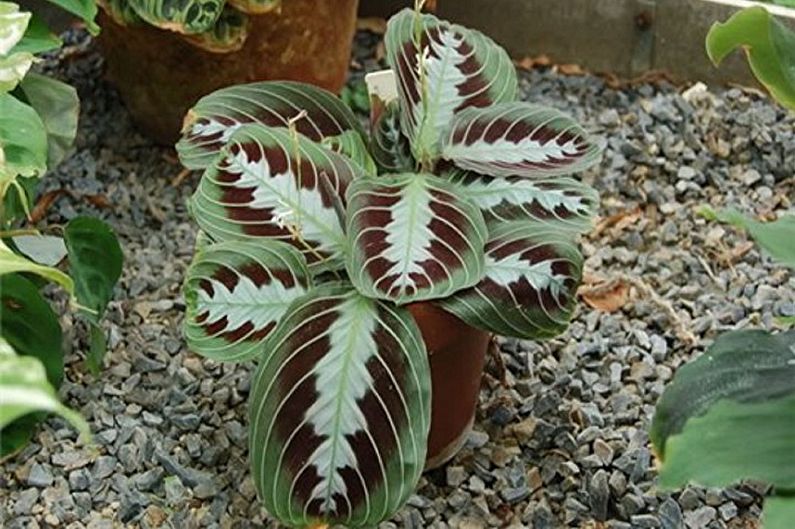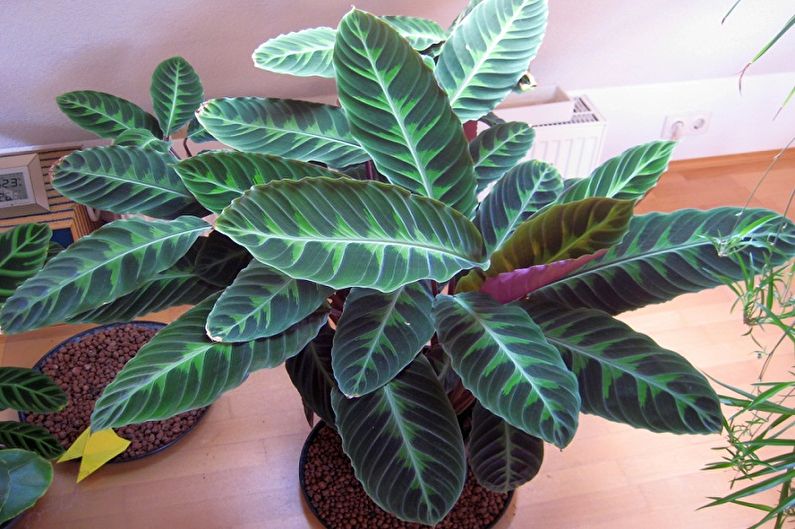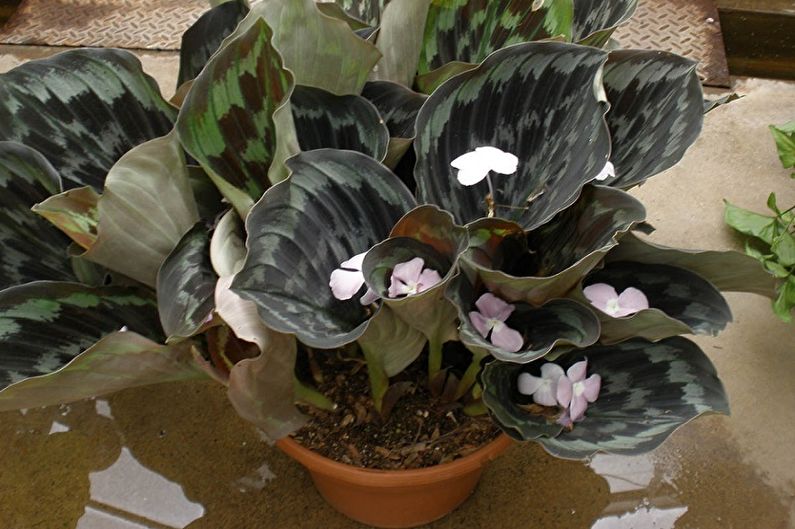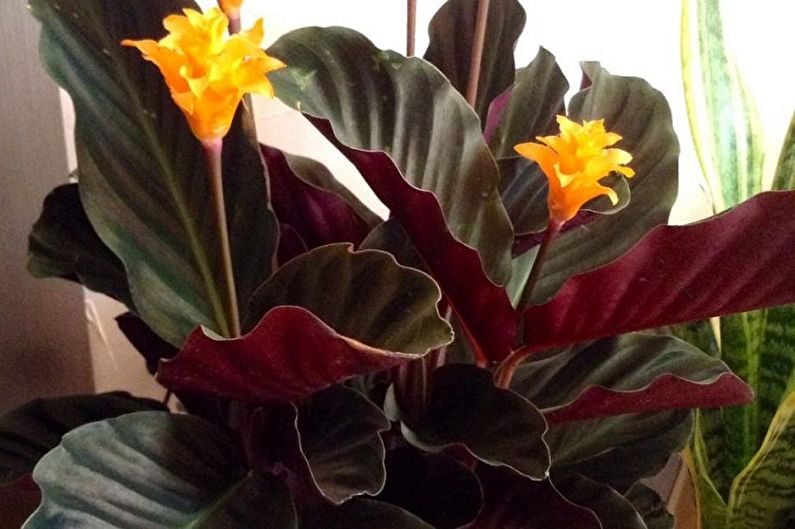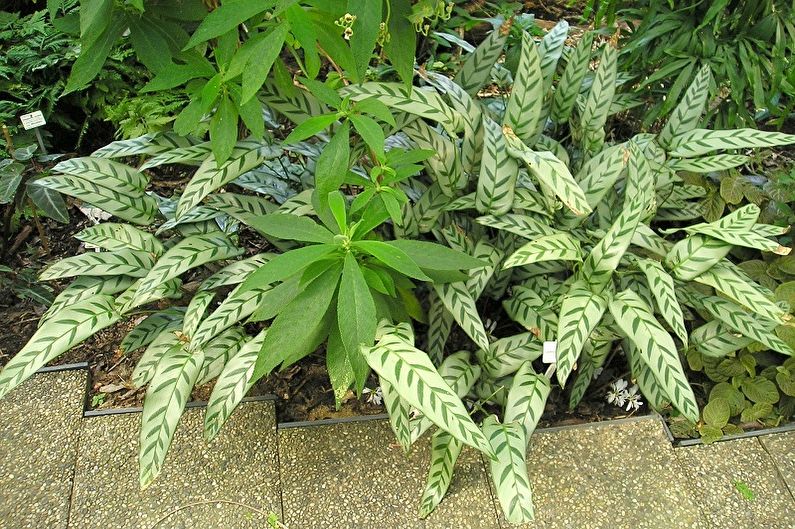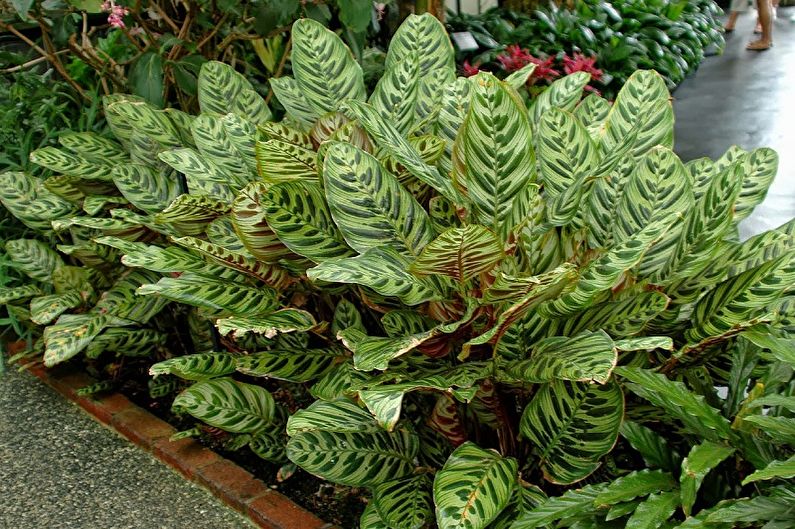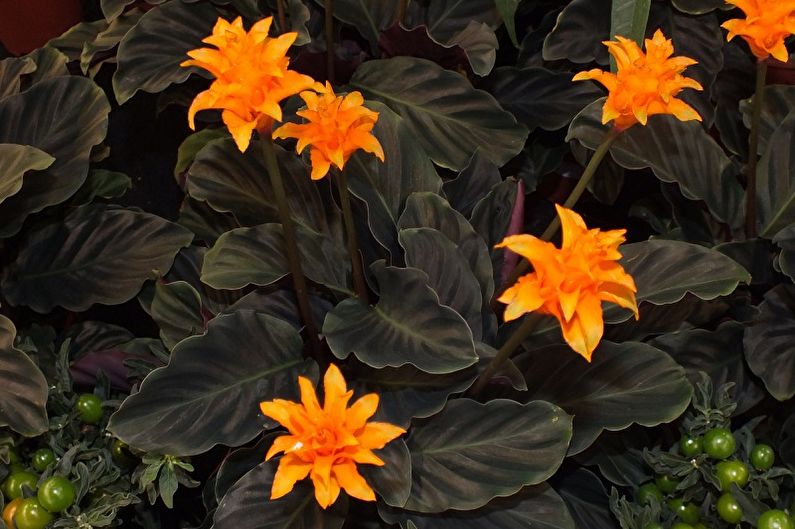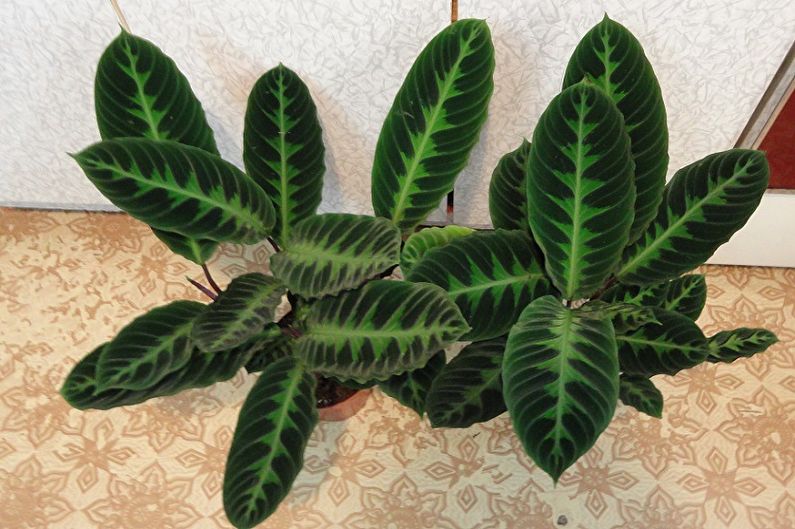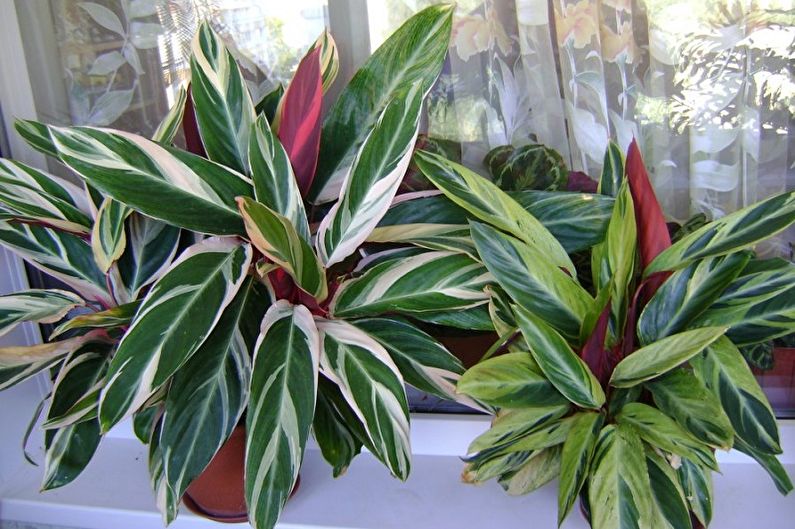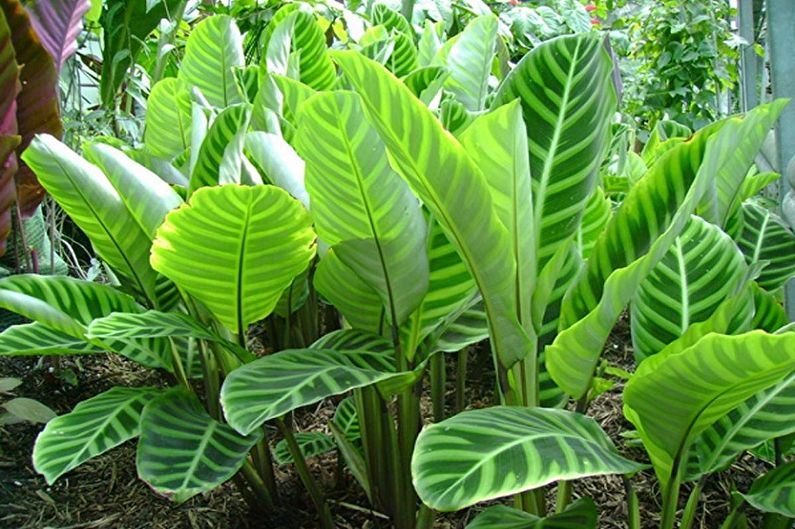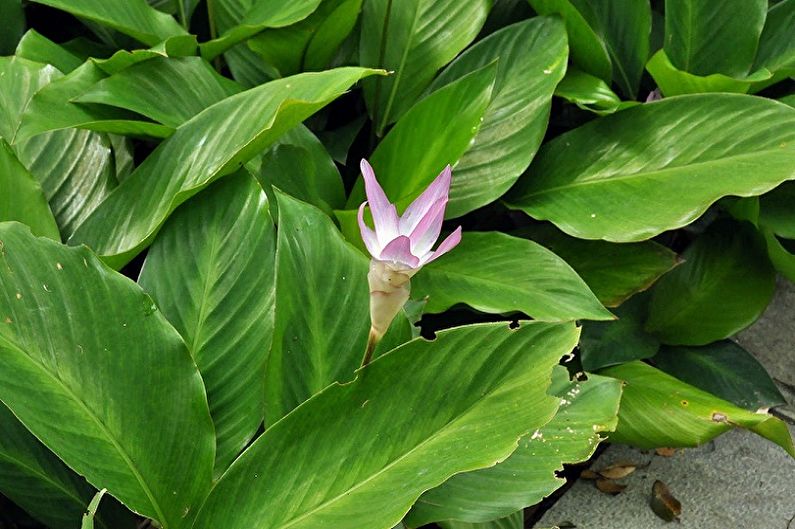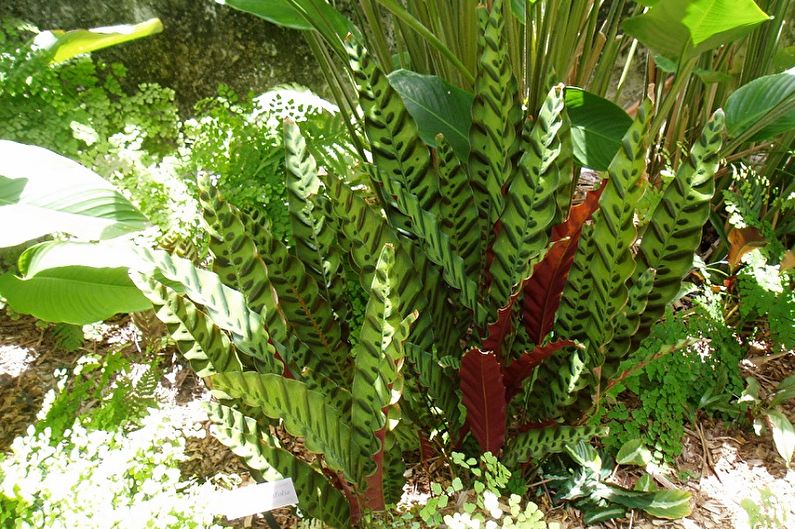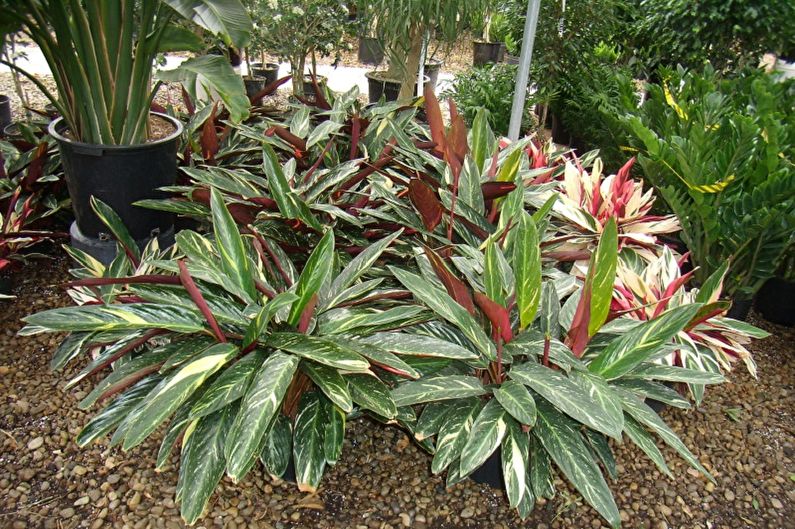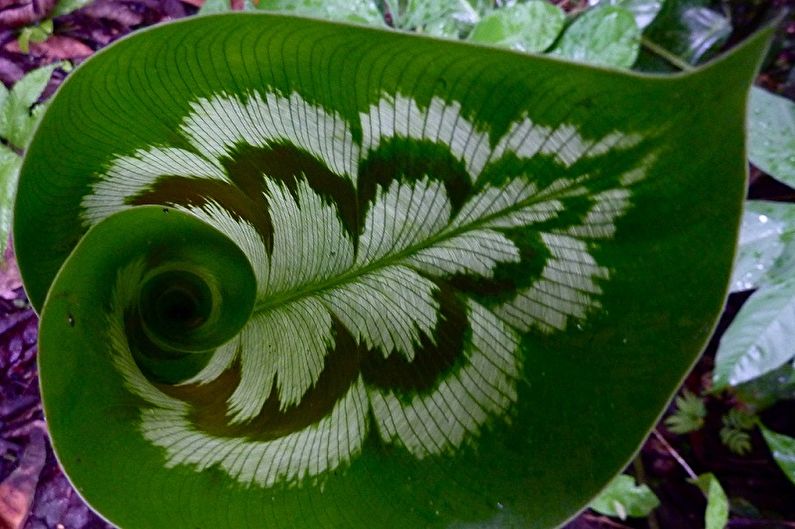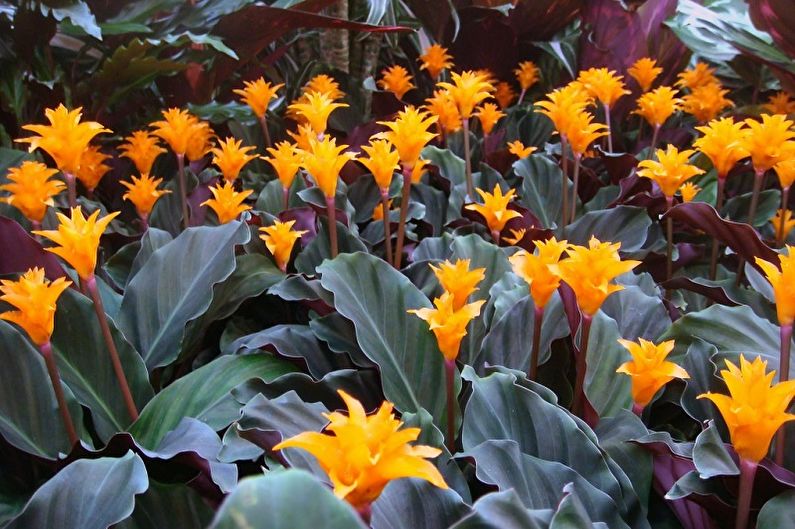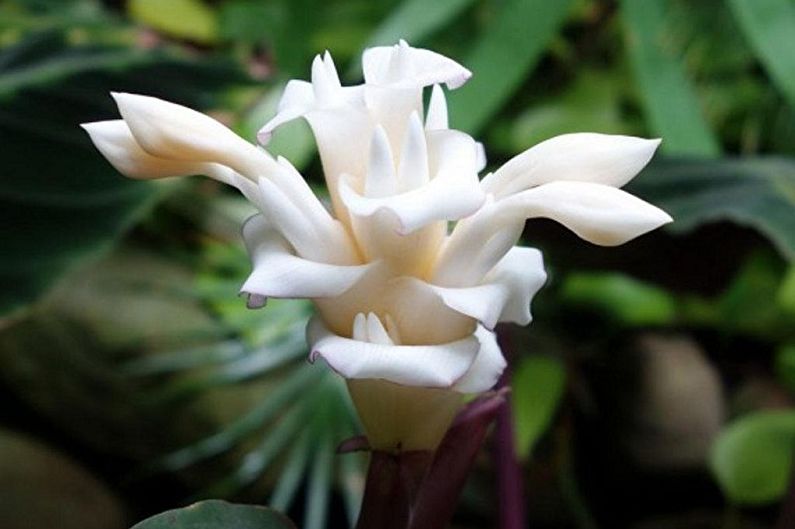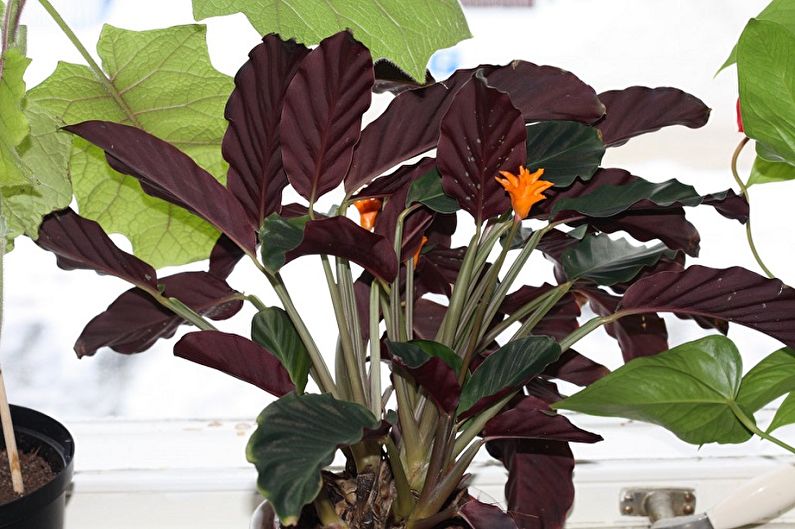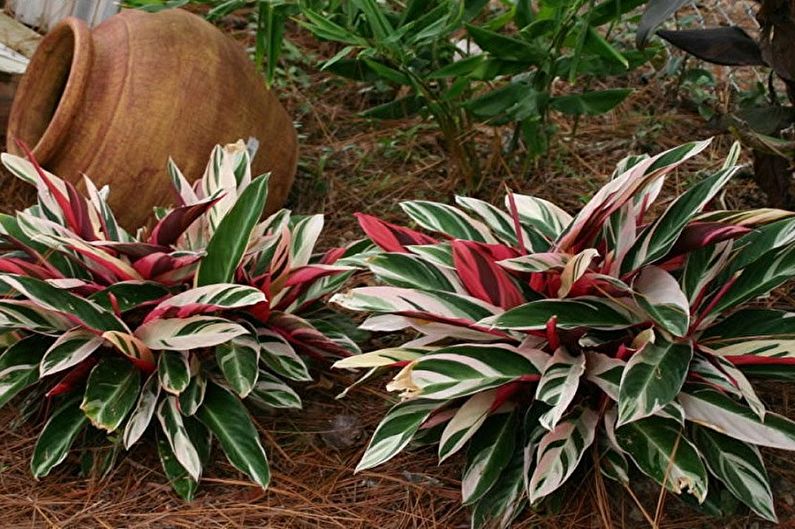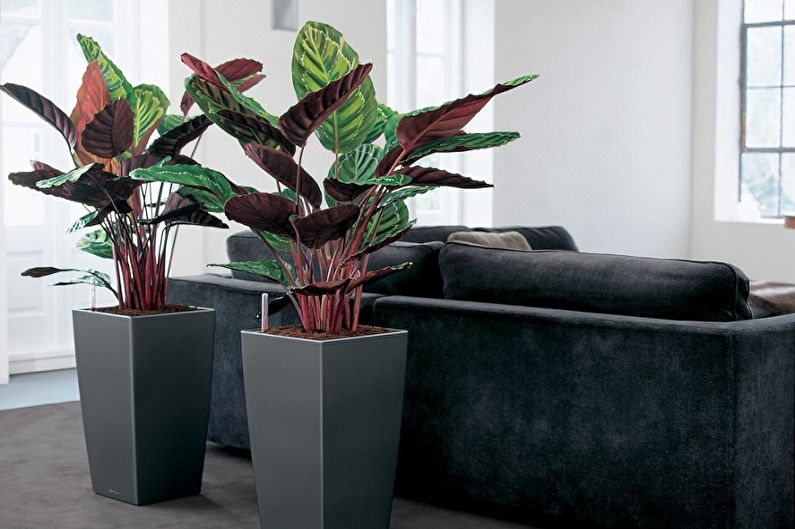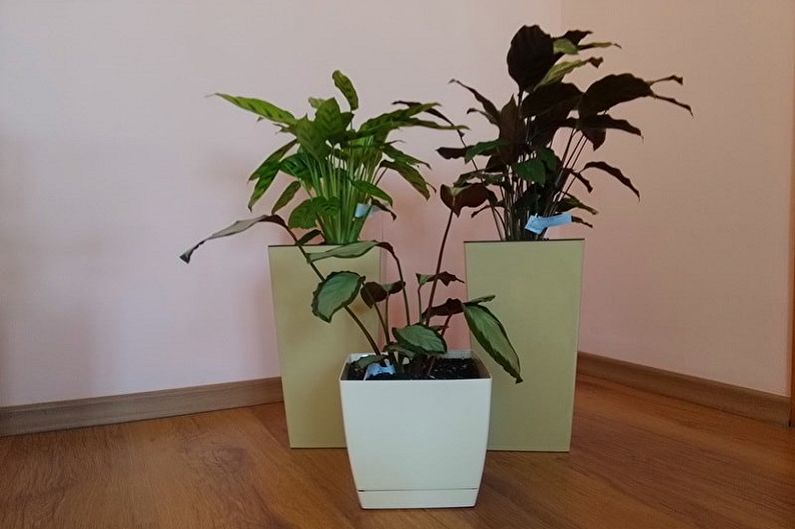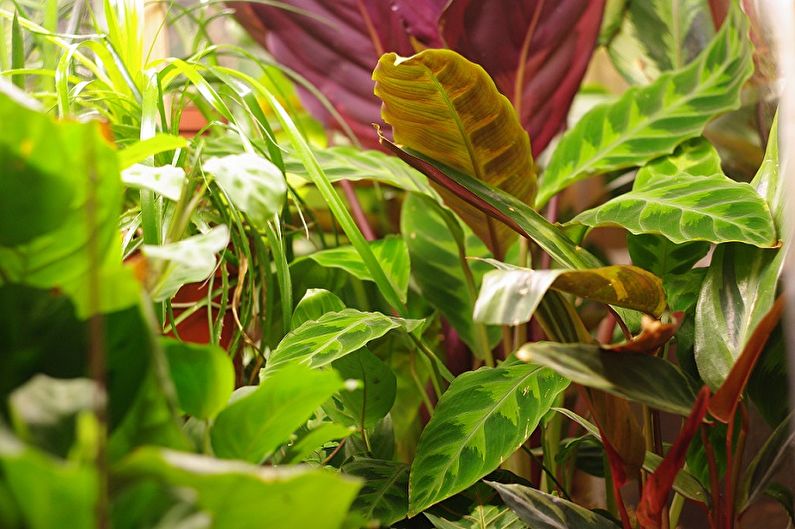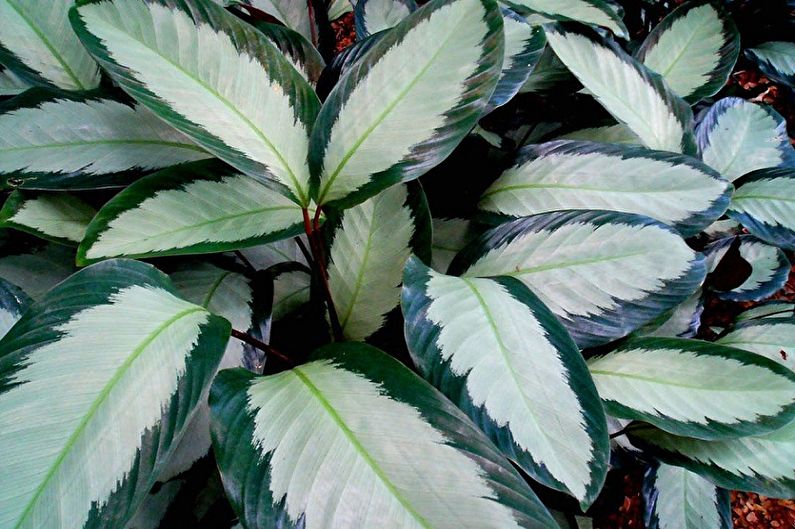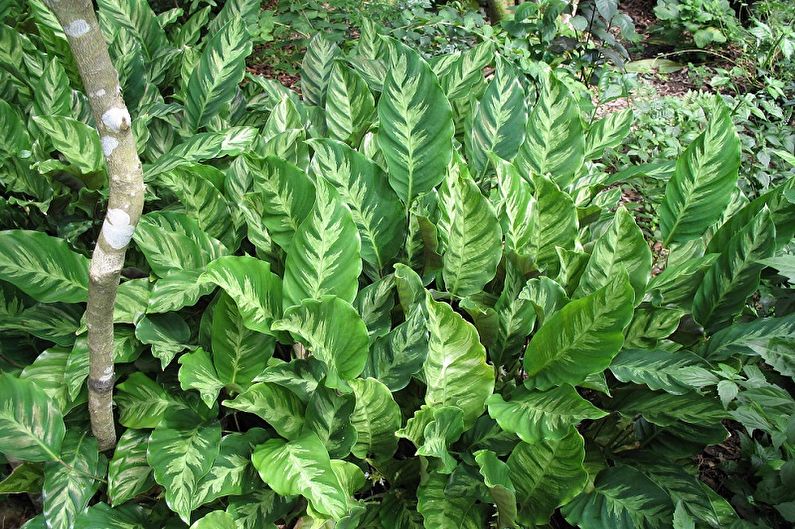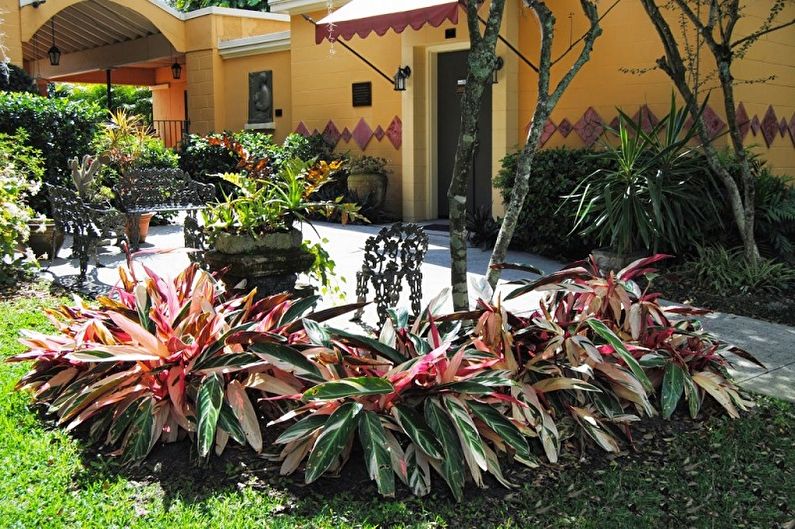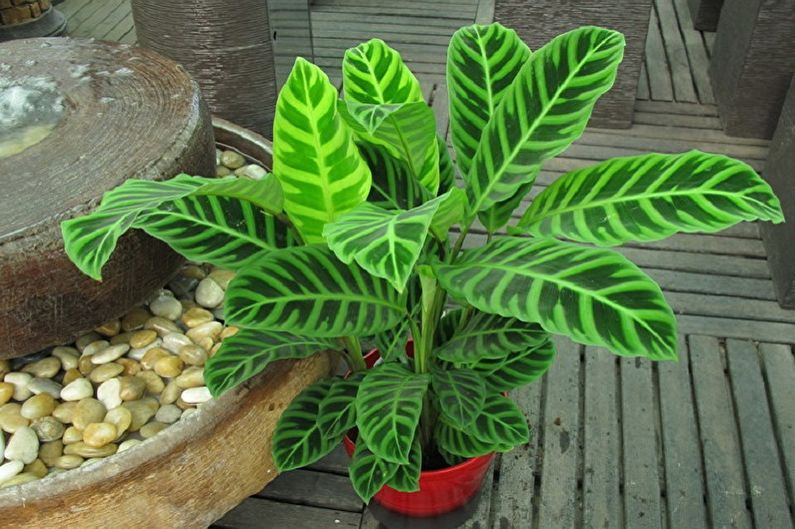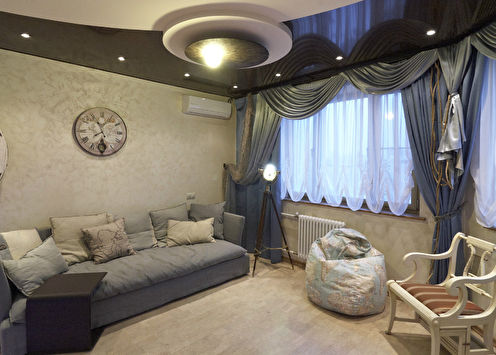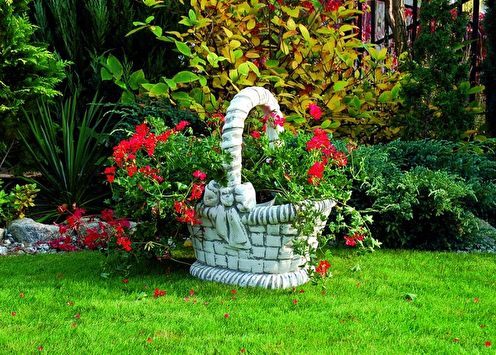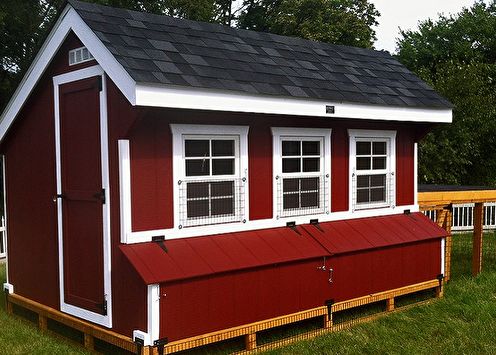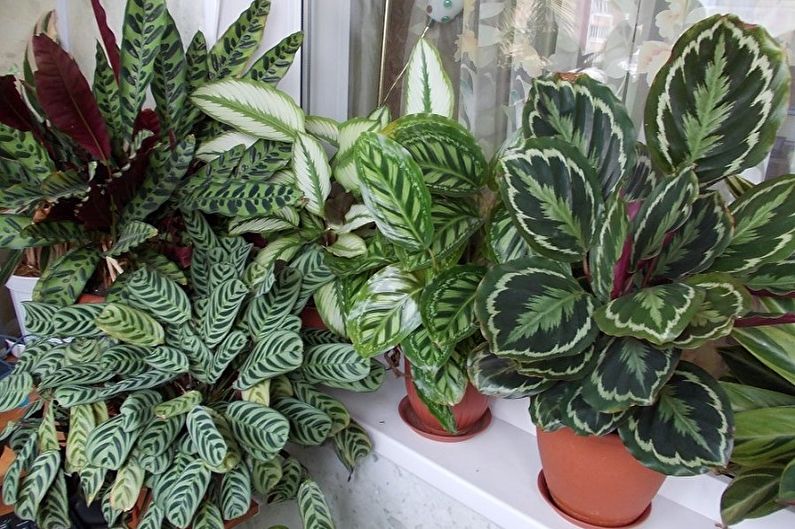
Calathea is an elegant and spectacular ornamental plant, one of the most prominent representatives of the arrowroot family. They grow it at home and in greenhouses, although initially she came to us from the tropical forests of South America and quickly fell in love with flower growers thanks to her beautiful and spectacular leaves. It is impossible not to notice it in the store, on the windowsill or in the garden. She instantly attracts attention with a variety of leaf colors. Although calathea is rather capricious and requires constant care, all efforts are fully paid off by its incomparable decorative qualities.
General characteristics
The distribution of calatheas does not end in South America. It is much more extensive and diverse, covering almost all tropical regions on different continents, excluding Australia. For example, the arrowroot family is widespread in Africa, India, Oceania.
Most members of this family are lianiform or grassy. A developed rhizome stores moisture and nutrients. Calathea does not tolerate dryness and dies quickly with a lack of water.
Calathea is a perennial. In the room, it grows to a meter, sometimes more. It differs in a magnificent hat from leaves of various shapes. They are large, up to 20 cm, in different shades. The underside is often a different shade, but there are also plain leaves. Aborigines use the central vein for weaving baskets. From here came the main name of the flower, "calathea" - this is "basket". Brazilians, for example, used calathea to cover their roofs.
In floriculture, it is used as a decorative foliage plant. Variegated large foliage is valued far more than unremarkable flowering. The natural mechanism is also interesting: the leaves are turned towards the light in order to collect its maximum amount. Accordingly, after night they lie almost horizontally, and during the day they rise and curl up, as if folded arms. That is why in everyday life, the calathea was once called a prayer flower.
The active flowering period begins in the spring. The inflorescence is spike-shaped, with unremarkable multi-colored flowers. It lasts for a month. There are more decorative varieties, but this is rather the exception.
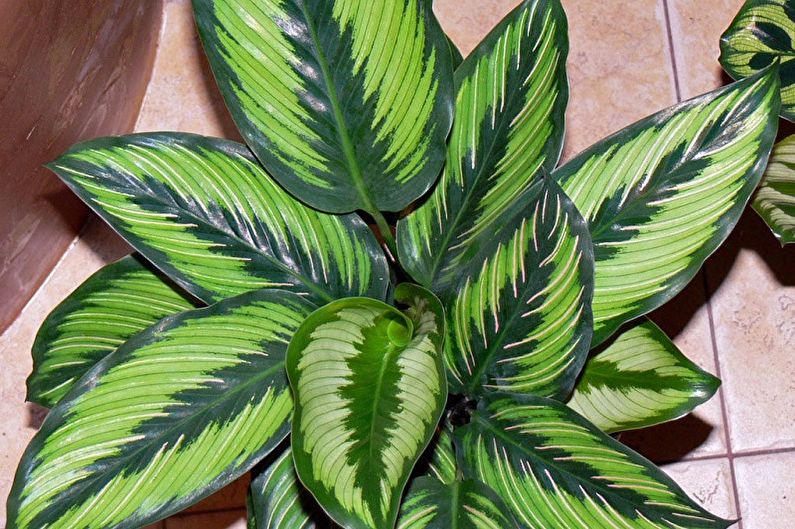

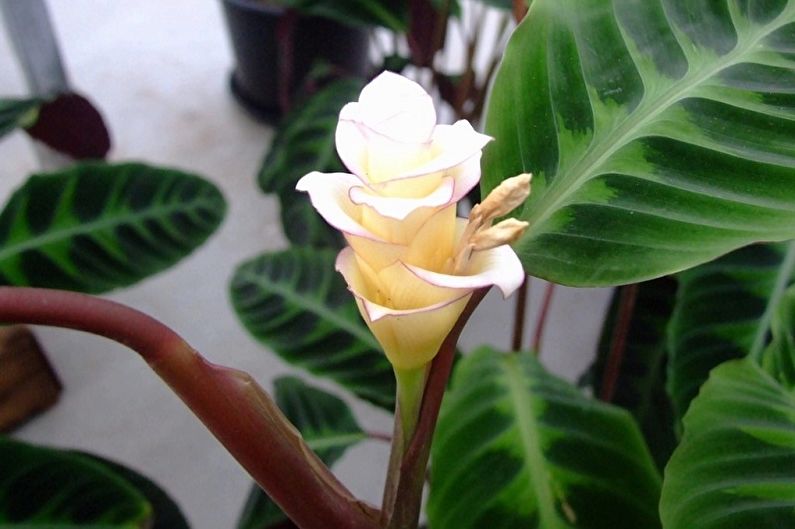
Types of Calathea
At home, several varieties of calatheas are grown that are well adapted to enclosed spaces. When choosing a plant, it is important to pay attention to the condition of the leaves and its appearance. Decorative views have different patterns and colors, can be symmetrical or asymmetric, smooth or velvety, in different shades. Some of them also bloom brightly, for example, Crocata. And there are varieties that have both beautiful flowers and leaves. For example, Calathea Varshevich.
Calathea Crocata
Beautiful decorative saffron calathea native to the Amazon. "False" flowers are collected in short inflorescences on long peduncles. Real flowers are relatively unprepossessing and hidden among the bracts, with which they almost merge with a shade. Red-orange candles look especially impressive on a velvet dark green background.
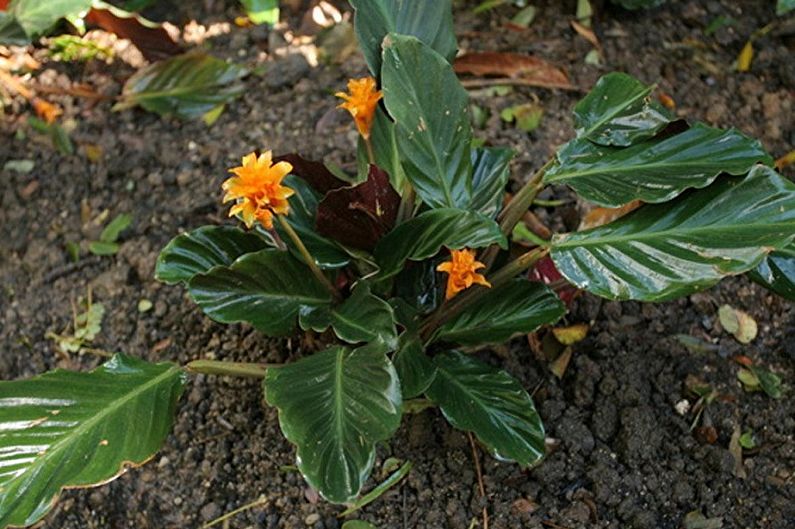
Calathea Varshevich
Large variety with dense rosettes and elongated leaves. Oval plates of saturated dark green color with a light pattern and a purple back. Creamy pink spikelets-inflorescences look unusual. Bracts are light, sometimes quite white. Peduncles short, burgundy.
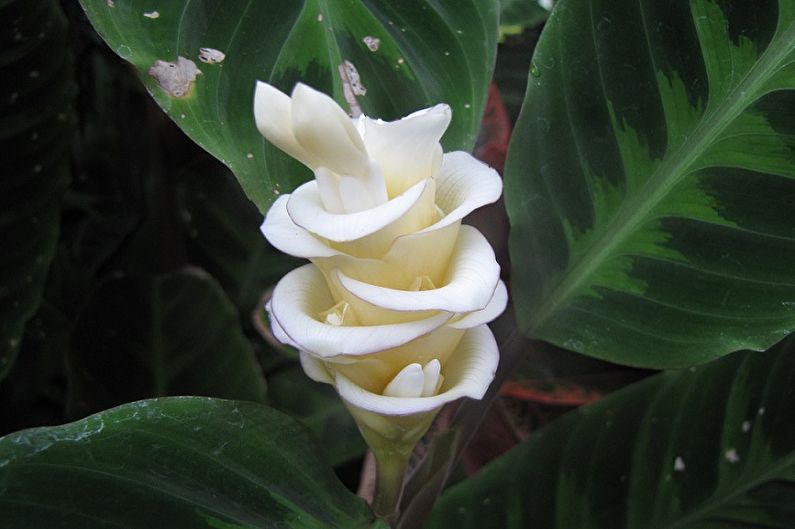
Calathea leopard
It got its name for its characteristic spotty color. The vein in the center forms a recognizable ornament resembling a leopard color. Yellow flowers only enhance the impression.
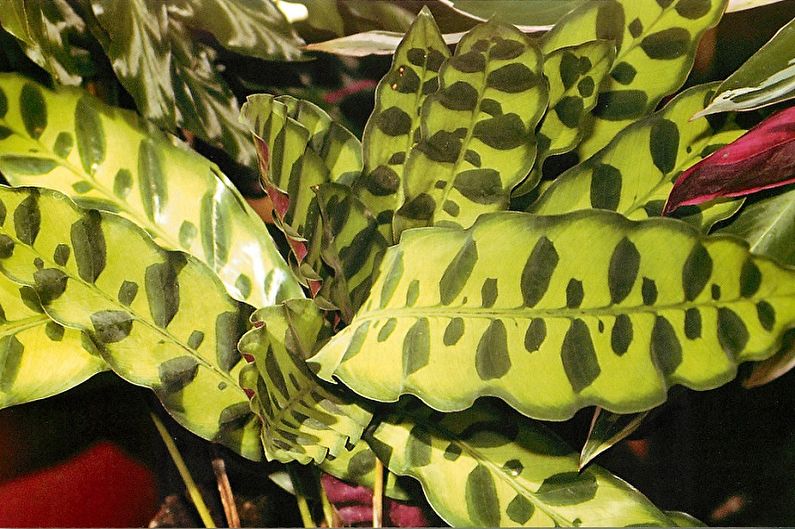
Calathea Roseolikta
Bright and interesting variety with pink patterns.Although the pattern gradually fades, it is still noticeable. The brightest subspecies is the Medallion. There is also a dimmer Rosie, whitish Cynthia and striped Stripes.
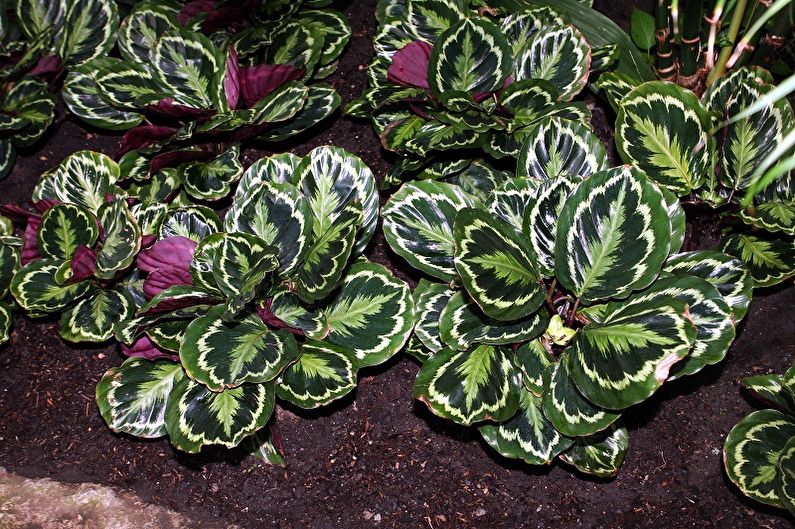
Calathea Makoya
This variety comes from the Brazilian tropics. It feels better in greenhouses with high humidity, but direct spraying is much worse. Leaf plates are large and long, oval in shape, with a dark edge and a burgundy inner side. The pattern outside and below is completely repeated.
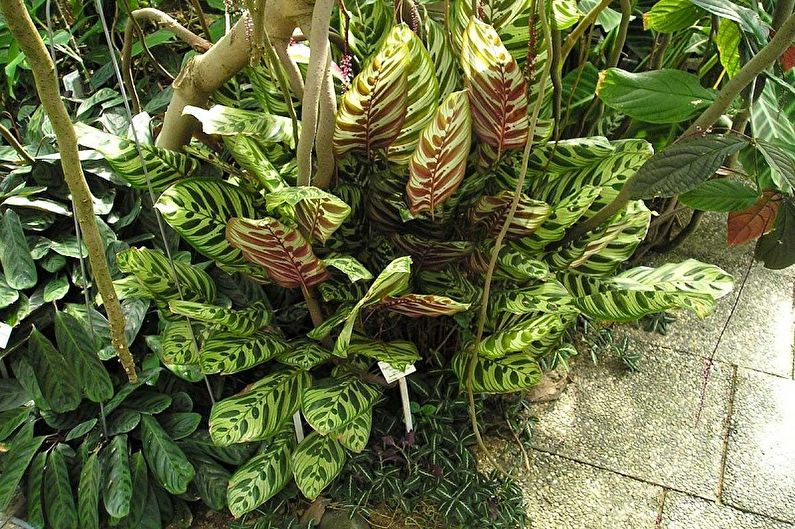
Calathea is wonderful
This is one of the simple and unpretentious varieties, so it is most often used for indoor seedlings. On the leaves - an elliptical pattern. The reverse side of the light plate is a deep red shade that goes into purple.
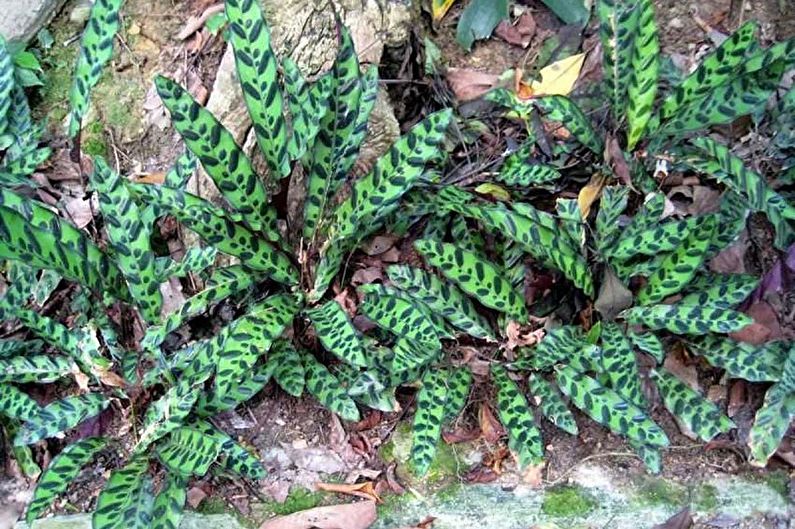
Calathea Care
Calathea is one of the most demanding tropical plants for home seedlings. But you can cope with it, if you approach the issue correctly.
The natural soil for calathea is light and breathable. Substrates for the home are prepared on the basis of sheet earth. Friability provides peat and sand. Compost, charcoal, bark, needles are responsible for useful components. You can add a little humus. A classic professional flower soil mixture with an already balanced composition is also suitable.
For systematic top dressing, complex fertilizers are used. During the period of active growth, nitrogen and calcium are especially needed. They are administered once every few weeks. Continue intensive dressing for some more time after flowering.
Most varieties do not have the highest, but stable temperatures. In the summer it is approximately from +15 to + 25C. Winter minimum with minimum watering + 12C.
Calathea is very sensitive to drafts and sudden changes. You can not put it on the aisle or at constantly opening windows and doors.
It is advisable to avoid direct sunlight. Due to their excess, the flower fades and fades, and the plates fold. The ideal option is a half-shaded corner. In addition, this is a great way to add color to a boring interior.
Under natural conditions, calathea grows on the banks of rivers and lakes, therefore it requires high humidity and regular watering. Constantly spray the flower from the finely divided spray gun. Water should be clean and settled. Pebble or moss is poured into the stand for the pot. They are gradually moistened as necessary, but stagnation should not be allowed.
Varieties with pubescent and velvet leaves are not sprayed. This can damage delicate foliage and rot. Such species are bathed in the shower several times a month, and for humidity they spray the air around. It is convenient to dust off a soft brush.
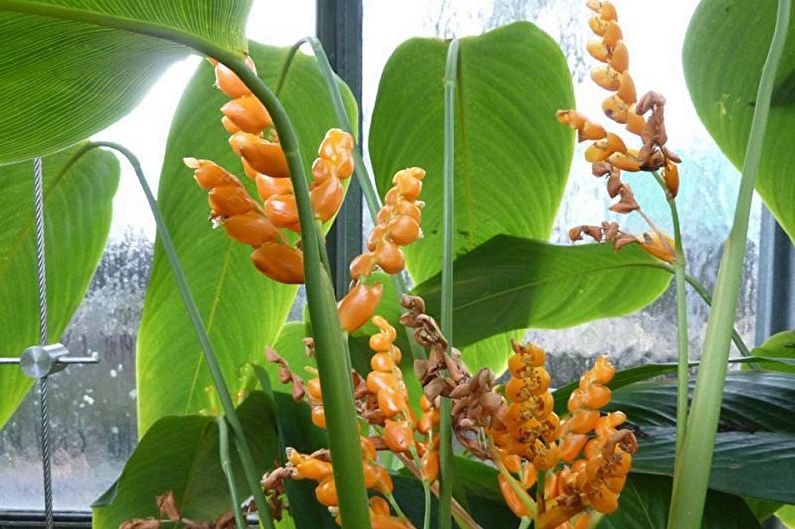
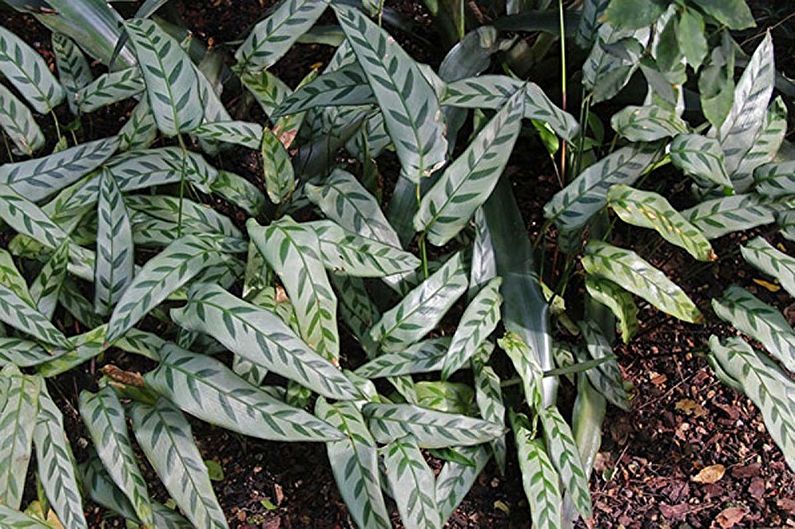
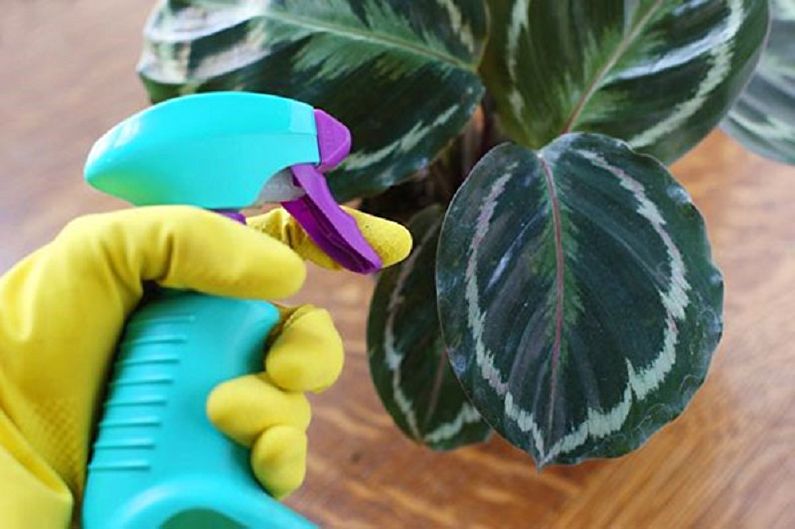
Transplantation and reproduction
Young calathea needs to be transplanted annually, preferably immediately with the onset of spring. Adult - about once every 3 years, as needed. This is easy to track: a rhizome slowly emerges from the drainage holes. The optimal way is transshipment, because the root does not tolerate digging. Therefore, an earthen lump is desirable to preserve.
It is more convenient to do this with the help of shallow pots of large diameter. They are ideal for a surface system. A new substrate needs to be added to the new pot, and a pebble drainage layer is laid on the bottom. Do not compact the soil too much to maintain its breathability.
New calatheas grow from cuttings. For this, when transplanting from the mother plant, several processes can be separated. Choose the strongest, with roots and a pair of leaves. They are planted in greenhouse conditions in a prepared substrate at high humidity and a temperature of about + 23 ... + 25C.
Another alternative is dividing the rhizome into parts. The rest of the order and mechanism of action does not change. Sprinkle slices first after dividing with charcoal.

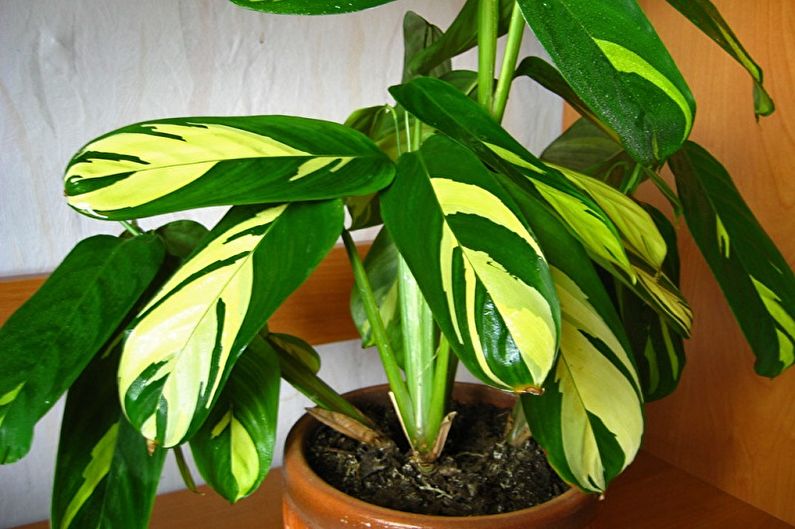
Pest and Disease Control
Calathea is gentle and delicate, so pests pose a special threat to it. Most often they start on young leaves.At the first sign of the appearance of scale insects, aphids, thrips, or other parasites, immediately take measures to protect calathea.
In rooms where chemical insecticides cannot be used, pay attention to traditional methods: soap solution, sulfur pollination, biological products, herbal infusions.
If you constantly monitor calathea and take care of it on time, it is almost not susceptible to disease. But for this it is advisable to avoid even slight deviations. Pay particular attention to humidity. With its shortage, the calathea dries, turns yellow and falls, and with an excess, the root rots.
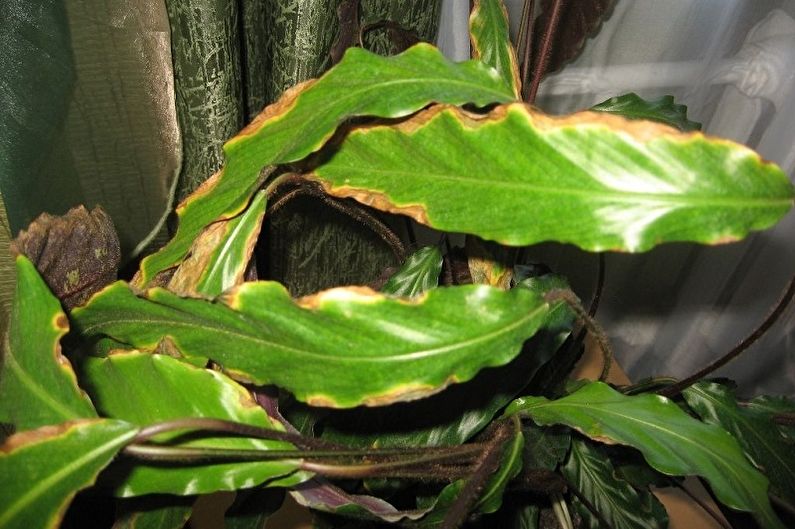
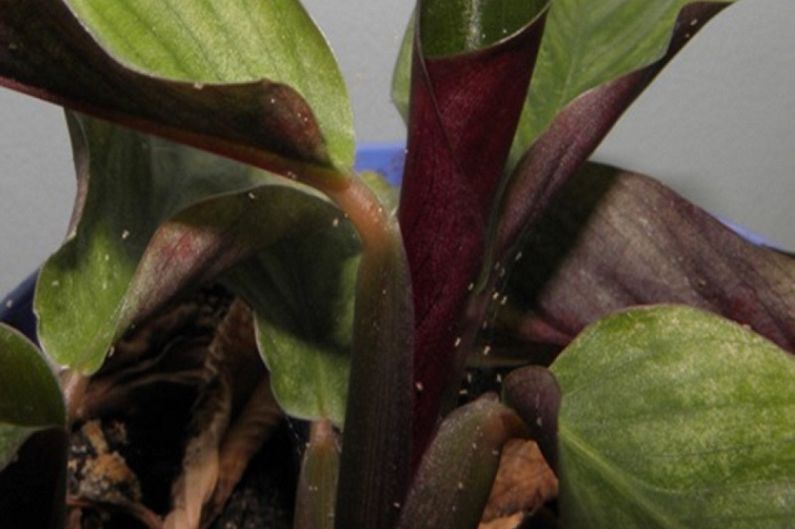
Calathea - photo
Calathea itself is a spectacular plant, but even better it will sparkle with interesting combinations. To find fresh ideas and unusual solutions, see our selection of photos!

